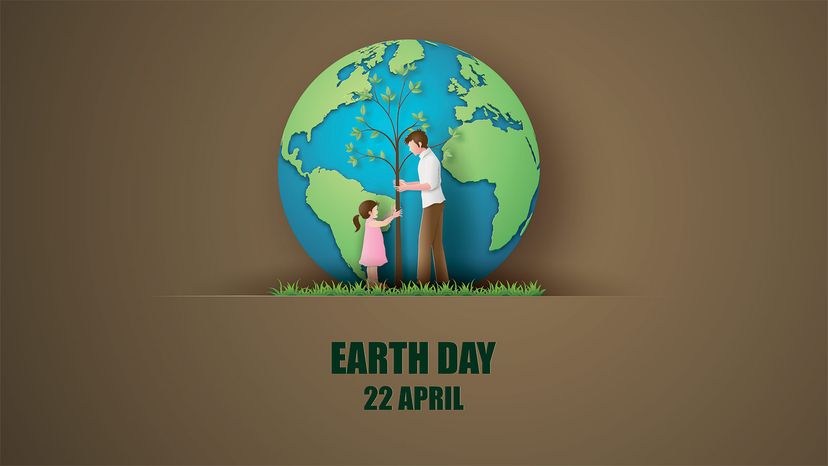
Every April 22, millions of people around the world gather to celebrate Earth Day. Through festivals, activities, and rallies, participants promote awareness of environmental issues and help protect the planet.
The seeds of Earth Day were planted in the 1960s, when a small but vocal group of scientists and environmentalists became increasingly concerned that pesticides, sewage and industrial pollutants were poisoning the air and water and threatening the Earth. Dramatic events like the 1969 Cuyahoga River fire in Cleveland, Ohio (which reportedly started when sparks from a blow torch ignited pollution and oil on the river's surface) only stirred the public's worries about the state of the environment.
Advertisement
During this time, Senator Gaylord Nelson of Wisconsin also was getting concerned about the health of the environment — and the U.S. government's apparent lack of attention to it. In 1963, he convinced President John F. Kennedy to go on an 11-state conservation tour. But even the popular president's impassioned pleas weren't enough to bring the environment into the political spotlight.
Senator Nelson continued pursuing the cause, speaking to audiences throughout the country over the next few years. In 1969, he noticed that Vietnam War protests called "teach-ins" were gaining popularity on college campuses across the country, and he thought, why not organize the same type of protest on behalf of the environment? The idea for Earth Day was born.
Senator Nelson recruited Harvard Law School student and environmental activist Denis Hayes to coordinate the events. On April 22, 1970, 20 million people gathered across the country to show their support for the environment on the very first Earth Day.
The events were far larger than any protest occurring at the time.
In New York City alone, 10,000 people gathered for concerts, lectures and rallies. More than 2,000 colleges and universities switched from their ongoing anti-war protests to join in pro-Earth celebrations. Even Congress recessed for the day.
Earth Day was credited with putting environmental issues on the political map and launching the environmental movement in the United States.
In 1990, Earth Day became a global event. Two hundred million people around the world staged dramatic displays of environmental support, such as a 500-mile human chain in France. In 2000, Earth Day entered cyberspace, with emails and live web events bolstering participation.
Earth Day didn't just raise awareness for environmental issues; it was instrumental in the establishment of several government initiatives.
In 1970, President Richard Nixon created the Environmental Protection Agency (EPA) to monitor and safeguard the health of the nation's air and water. The Endangered Species Act of 1973 protected threatened animals around the world. People everywhere began recycling and conserving water and energy.
Today, Earth Day continues to be celebrated by people around the world. Despite the great progress that has been made since the first Earth Day, however, environmentalists realize that there is still much more that needs to be done to protect and preserve the planet.
Advertisement